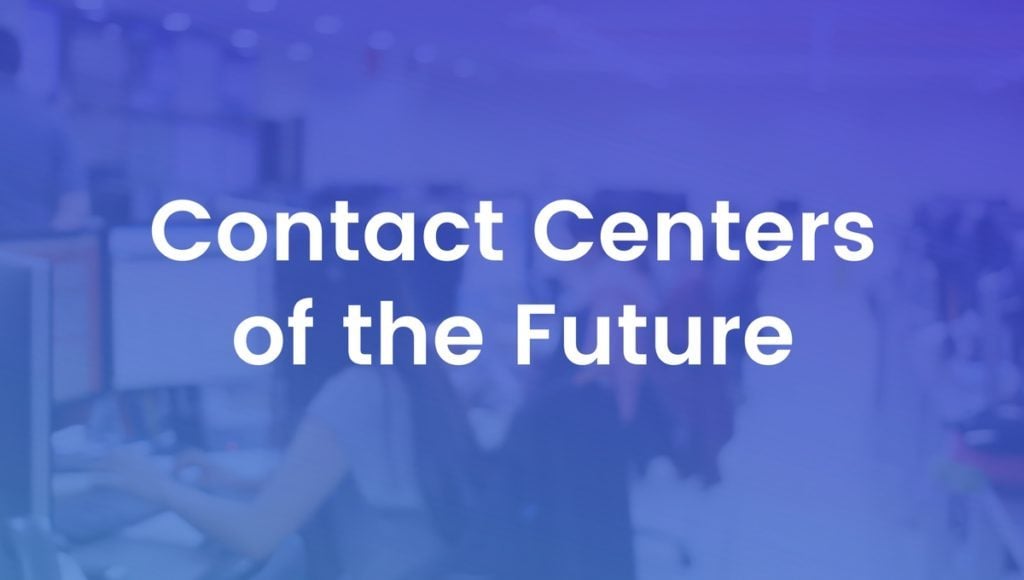
Customer service goals have not changed tremendously since the days when contact center agents took phone calls one by one to answer questions and resolve issues. Agents were charged with providing quality service so that the customer had the support they needed to either make a purchase decision or enjoy what they’d already purchased – and do so efficiently. However, the channels, processes and tools available have changed quite a bit with technology advancements, and while the end goal of customer service may still be the same, the way agents achieve these goals are quite different.
Customers have turned to social media from phone and email channels for service, and are now shifting again. This time, to digital messaging. As technology fuels companies’ progress in providing a great customer experience, it is important not to let internal processes hold your contact center back from evolving with customers’ preferences and expectations.
Contact centers should be using the tools available to ensure customers get accurate answers fast, even when the volumes of customer interactions peak.
Depending on the industry, seasonality can play a big role in when contact centers face surges of customer issues and inquiries. Retailers and CPG brands know the holiday season is a busy one. With loved ones’ gifts on the line, customers will become adamant about quickly resolving their issues. Airlines also face this same influx of customer service needs, as traveling customers want to get to their destinations without a disruption that could ruin their holiday plans.
Then there are times that customer issues will compound tremendously, with no way of knowing ahead of time. Consider recent natural disasters Hurricane Harvey and Hurricane Irma leaving millions of people without power, water and gas. While tropical storms can be predicted days or weeks in advance, the aftermath and impact on customers is often unforeseen.
Holidays and bad weather impacts on customer service are nothing new, but, the way customers communicate their issues is constantly evolving.
When customers are stuck without power or internet access after the storm passes, they often turn to their devices – utilizing social media and digital messaging channels to address cable providers, power companies, gas and other utilities to communicate issues and ask for service updates. Essential industries like power and utility service companies are among those needing to evolve their customer service strategies the most, because when a snowstorm or hurricane hits, all eyes are on the devastation and the companies serving the victims.
Across industries, contact centers of the future have evolved to improve their organizational approach to customer service in a few ways:
They’re Smaller.
This is the age of self-service and digital communications. Contact centers of the future no longer need to staff people at the phones to respond to high volumes of service calls. Customers today are looking to resolve their own issues in many cases, turning to online communities, virtual service agents and automated chats to find the answers they need. As mentioned in a previous blog, contact centers can take away quite a few digital enhancements – like the case for investing in Facebook Messenger – from Mary Meeker’s 2017 Internet trends report. The 2017 report revealed Messenger is the top Facebook channel in terms of monthly active users, meaning customers prefer this channel as a means of communicating. Contact centers that evolve with customer preferences by investing in digital and social customer service tools empower their teams to respond faster, more efficiently and ultimately reduce the need to hire more staff during busy periods.
They’re Smarter.
This is also the age of data-driven personalization. Customers expect companies they support to know their name, demographics, purchase history – and they don’t want to put in effort repeating this information multiple times. In the same way marketers use customer information to advance products and sell, customer service teams and contact center agents should use customer information to provide accurate, fast resolutions. According to Forrester’s Top Trends for Customer Service in 2017, prescriptive advice and decision-making offers contact centers a way to efficiently and accurately answer customer questions. With technology and analytics tools, organizations can create rules to route interactions to the proper resource and/or agent who can most effectively answer the question based on past experience.
They’re Strategic.
With the opportunities and advancements in customer-centric communications today, the pace of technology adoption and innovation is faster than ever before. Companies competing for customer loyalty will find it harder to maintain a competitive advantage with technology tools alone; they need to use those tools strategically to anticipate and meet their customers’ needs. Thriving companies know their customers better than anyone, and therefore, should not necessarily wait on the next available “super cool and valuable contact center tool” to enter the market. Companies like Western Union are enhancing their business models with social and digital service tools available now to better serve customers.
It’s never too late to innovate.
You may be surprised that a 166-year old financial services company would be leading the charge in using social media messaging to expand its service, but that’s exactly what Western Union did with its Money Transfer bot for Facebook Messenger. Knowing that Messenger is used by billions of people all around the world – and that Western Union customers often have the most issues transferring money to loved ones in other countries or while traveling themselves, the money transfer bot was a natural extension to the company’s business model.
Image: Sparkcentral



